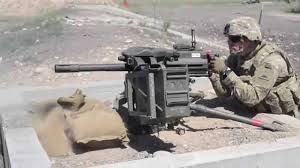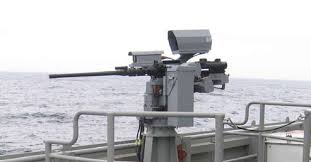ComNavOps has long had
doubts about the wartime role of the P-8 Poseidon patrol aircraft. The doubts arise from the combination of the
aircraft’s slow and defenseless nature plus the necessity that it broadcast its
presence (operating its radar) when performing the maritime patrol function
(MPA). Thus, the enemy is given a free
location fix against a high value, slow, defenseless asset. In other words, the P-8 is a sitting duck in
combat if used as envisioned.
“Used as envisioned”, of
course, brings up the subject of the concept of operations (CONOPS). How will the P-8 be used? What will its main function be – ASW, MPA,
both? Will it perform its searches
actively or passively? Will it be
defended by fighter aircraft or used independently?
Most importantly, how close
to the contested air/water space will it be used? Certainly, the further back from the front
line, the safer. Of course, the flip
side of that is that the further back from the front line, the less useful and
effective it is.
The next question is where
is the front line? Well, that’s a
nebulous concept that depends on the weapons being considered. Considering an enemy rifleman, the front line
is a hundred yards or so. Considering
enemy surface to air missiles which would be targeted at a P-8 aircraft, the
front line is the range of the SAM systems which is 250 -300+ miles. Here’s some range data on Russian SAM systems
for consideration.
S-200
(SA-5) 190
miles
S-300
(SA-10) 121
miles
S-400
(SA-21) 250
miles
S-500
(?) 250
– 300+ miles
Of course, the reported
Russian SAM ranges are, undoubtedly, maximum theoretical ranges. Effective ranges are probably half that.
Now, compare the SAM
engagement ranges to the P-8’s detection range which is reportedly up to 200
miles for large targets with low resolution.
An effective range is probably more on the order of 100 miles.
Comparing the SAM ranges and
the P-8 detection range, it’s clear that the P-8 will have to enter the SAM’s
engagement range to see anything assuming the SAM systems are on the front
line. The point is that unless we’re
willing to consider P-8s as expendable, they’ll have to be held well back from
the front line. With that in mind, what
will the P-8s be looking for?
So far, this is considering
only SAM ranges. If thousand mile
fighters and UAVs are considered, the P-8’s will be pushed even further back
from the front line.
Knowledge of the location
and movement of enemy units behind the front lines is immensely useful. Knowledge of the location and movement of
enemy units many hundreds of miles on our side of the front line is useful
(certainly!!!) but highly unlikely other than the odd submarine. In simple terms, the P-8 will offer us no
intelligence about what’s happening inside the Chinese first island chain which
is exactly the kind of intel we’d like to have.
 |
| P-8 Poseidon - Useful in War? |
Let’s switch gears,
momentarily. ComNavOps is ever one to
study and learn from history and it occurs that the WWII PBY Catalina is a
relevant comparison to the P-8. The PBY
was designed as the MPA aircraft of its time and, indeed, functioned in that
role for the first couple of years of the war before being superseded by long
ranged, land based aircraft. Like the
P-8, the PBY was large, slow, and defenseless.
Data is difficult to come by but here’s the best summary of the early
PBY loss rates that I could assemble, divided into the two main operational
areas. The operating area is followed by
the number of PBY’s deployed and then the number of PBY’s lost.
Location Deployed Lost
The loss rates are
staggering. Admittedly, many of the
aircraft were destroyed on the ground but the loss rates in the air were also
appalling. On the other hand, the
aircraft performed its function. For
example, the 30 PBY’s based on Midway found the Japanese fleet and set the
stage for the battle that followed.
Thus, as a cheap, plentiful, expendable detection system the PBY was
effective. We had lots of PBYs and could
afford to send them deep into potential enemy waters as expendable detection
devices. Locating an enemy fleet was
deemed worth the loss of the aircraft.
Does this hold true today? Are we
willing to send $200M P-8’s on one-way missions? Even if we are, we’ll likely only have around
80 P-8’s after the production run is done.
Note that we lost 82 PBY’s in the first couple years of WWII in just two
relatively localized theaters.
 |
| PBY Catalina - WWII's P-8 Poseidon |
Also note that the preceding
discussion is focused on the MPA role, using radar for long distance
surveillance. The situation becomes far
worse for the ASW role. ASW detection
does not occur at 100-200 mile radar ranges – it occurs at sonobuoy range. How will P-8’s possibly penetrate far enough
into the battlespace to perform useful ASW without being shot down? I have no answer for that and, indeed, the
answer would seem to be that it can’t.
This suggests a disturbing
scenario – that we have spent the last few decades building a military force
optimized for uncontested operations and one ill-suited for contested
operations. How will we perform ASW
inside the first island chain? Our own
submarines can perform ASW and that is, of course, one of their main functions
but that then brings the looming submarine shortfall into much sharper
focus. If submarines are to be our main
ASW platform why are we allowing such a shortfall in numbers?. Far from a shortfall, perhaps we should be
increasing our submarine numbers?
All of the preceding also
leads to the inevitable question, why do we even have P-8’s if they won’t be
effective in war? Why did we ever begin
building P-3/8’s? That answer lies with
the nature of the enemy when long range patrol aircraft were developed. During WWII, with only very short range
surveillance systems available, enemy fleets could be anywhere in the
Pacific. Thus, PBY’s were needed to
cover the entire ocean (or, at least, the areas of more immediate
concern). In more modern times, the Soviet Union was also a world-ranging naval force (submarines, in
particular). Thus, again, a patrol aircraft
was needed to cover the entire world.
The plus side of this was that while the Soviet Union had far ranging submarines that needed to be
detected their SAM systems and fighter aircraft were not present world wide. Thus, the P-3’s were free to roam the world, hunting
for submarines and conducting area surveillance, secure in the knowledge that
they were relatively safe.
Today, however, our enemy of
interest, China
We essentially replaced the
P-3 with a duplicate, the P-8 – upgraded a bit, to be sure, but for all
practical operational and tactical purposes, the same aircraft. Over the life of the P-3, the operational and
tactical landscape changed immensely from world wide surveillance to relatively
small, focused surveillance on A2/AD zones and the threat to the aircraft
changed from almost non-existent to very long ranged and lethal. Despite those immense changes, we simply
replaced the P-3 with its duplicate.
Perhaps we should have examined the CONOPS a bit closer and come up with
a better means to accomplish the mission – a means that might have been something
other than the P-8 or other than an aircraft, at all.
Some will say that the F-35
is how we will obtain our deep penetration intel. This ignores the reality that the F-35 has
neither the flight range nor the radar/sensor range to cover the entire
East/South China Seas. The F-35 might be
useful for looking at a specific, tiny spot but it is not a maritime patrol
aircraft. Add to that the likelihood
that every available F-35 will be fully occupied trying to establish air
superiority and none will be available for generic surveillance work.
Thus, we are left with the
conclusion that the P-8 and BAMS will not be particularly useful in high end
combat and the question, how will we gather useful A2/AD zone surveillance
information?





